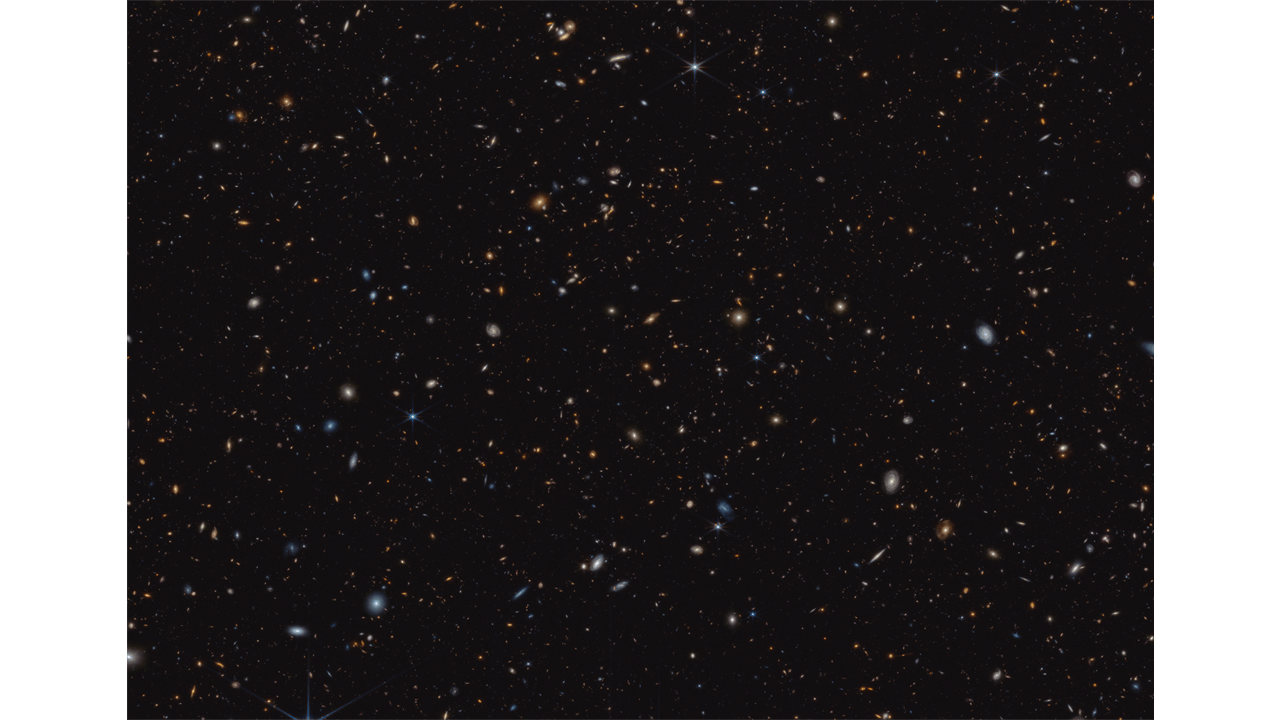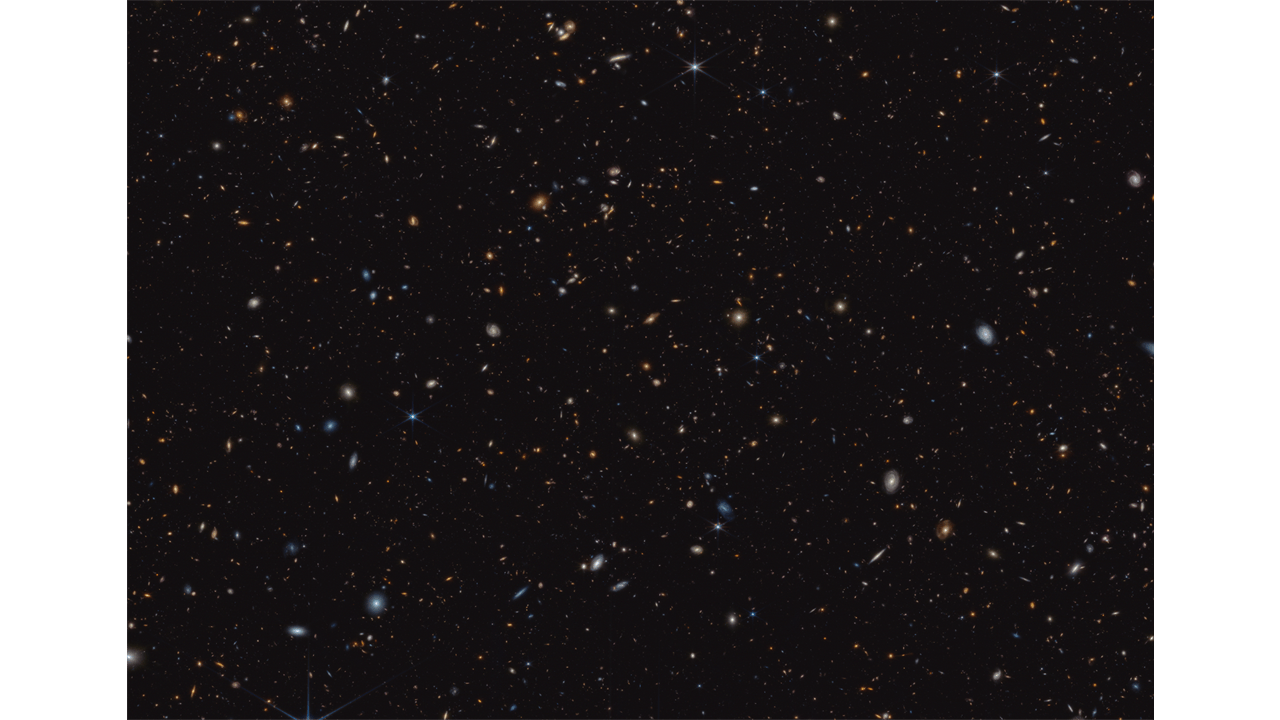
The JWST Advanced Deep Extragalactic Survey (JADES) program recently looked back at hundreds of the oldest visible galaxies in the universe.
Just a few hundred million years after the Big Bang, early galaxies were already churning out billions of hot, massive blue and white stars. More than 13 billion years later, their light — now stretched deep into the infrared wavelengths — finally reached the James Webb Space Telescope in orbit around Earth, helping illuminate one of the least-understood phases of our universe’s ancient past. Two teams of astronomers working with the JADES data recently presented their work at the annual meeting of the American Astronomical Society.
Galaxies far, far, far away
Until the last year or so, galaxies dating back to the beginning of the visible universe were rare gems; astronomers had only studied a handful of them, and they were hard to see in any detail because distance (more than 13 billion light years) makes them faint and stretches out the wavelengths of their light, shifting them deep into the infrared. Since July 2023, though, JWST has been living up to its hype and revealing hundreds of the universe’s earliest galaxies in surprising detail.
“Previously, the earliest galaxies we could see just looked like little smudges,” says University of Arizona astronomer Kevin Hainline in a recent statement. “Now we can see that some of them are actually extended objects with visible structure. We can see groupings of stars being born only a few hundred million years after the beginning of time.”

Hainline and his colleagues, in another JADES study, identified about 700 galaxies that they say could be between 370 and 650 million years old. But they’ll need more observations and more analysis to confirm that the galaxies really are as ancient as they seem at first glance.
Astronomers estimate the age of distant objects based on their redshift: how much their light gets stretched out into longer wavelengths as it crosses the expanding space between point A and point B. Measuring the redshift of an object usually depends on measuring the full spectrum of light coming from it, but astronomers can make rough estimates by measuring how bright the object is at just a few particular wavelengths of light. That’s what Hainline and his colleagues did with their 700 distant galaxies. It’s a good method for estimating the redshift of hundreds of objects at once, but it also has to be confirmed later by detailed measurements of the light from each individual object.
In the meantime, astronomers have also spotted a few hundred other galaxies whose light has traveled all the way from the early universe, giving us a glimpse into the distant past. And those observations are shedding some light on why we can see anything in the universe in the first place.
“The stars at night are big and bright”
The early universe was dark and hot. Today, light – from radio waves to gamma rays – zips across the universe at roughly 668 million miles per hour. But when the universe was young, a fog of gas blocked shorter wavelengths from getting through; only heat could spread. But around 450 or 500 million years after the Big Bang, that opaque fog began to clear.
Young galaxies full of massive newborn stars and actively feeding supermassive black holes were blasting powerful ultraviolet radiation out into space. That radiation stripped atoms of their electrons, which changed the physical properties of the gas enough for light to move freely. The universe, in all its blazing glory, had just become visible.
University of Texas astronomer Ryan Endsley and his colleagues focused on galaxies dating to the beginning of this process, when the universe was just under 600 million years old. And the spectrum of light from those hundreds of galaxies suggested that they were already teeming with bright, enormous young stars.
“Almost every single galaxy we are finding shows these unusually strong emission line signatures indicating intense recent star formation,” says Endsley in a recent statement. “These early galaxies were very good at creating hot, massive stars.”







